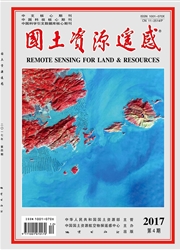

 中文摘要:
中文摘要:
对嫦娥一号干涉成像光谱仪(IIM)数据的特点进行了分析,并就存在的一些问题提出了解决方案,制定了IIM数据应用处理流程,为该数据的正确使用提供方法参考。研究结果表明,在空间域传感器左侧响应偏低,右侧响应偏高;在波谱域长波段响应存在较大偏差。经过绝对定标和辐射畸变校正后的反射率与地基望远镜光谱匹配良好,可以用于应用研究。利用校正后的数据对Aristarchus地区岩石类型开展初步研究的结果表明,该地区在纵向和横向上都存在岩性的多样性。校正后的图像不仅提高了分类精度,还被识别出撞击坑可能存在的滑坡。嫦娥一号IIM能够在全球、区域和局部尺度上以较高的空间分辨率和光谱分辨率获取月表元素和矿物成分信息,有助于深化对月球形成和演化的认识。
 英文摘要:
英文摘要:
This paper evaluated the characteristics and discussed some problems ot IIM 2C data.On me DaSlS oi all analysis, the solutions for the problems were provided and a data processing flow was established which can provide a method for future researchers. The results show that the response of the left side of IIM data is lower than that of the right in the space domain, and the response of the longer bands has larger errors in the spectral domain. The authors provided a feasible method for modifying these problems. The resulting reflectance derived from absolute calibration and radiometric distortion correction was matched well with earth -based spectra, which suggests that the modified data can be used to study the geology of the moon. With the modified IIM data this paper probed into the types of the rocks in the Aristarchus Plateau area. The results show that the rocks are diverse in this area in both vertical and horizontal directions. The classification accuracy was improved much after the correction for IIM 2C data. Moreover, the possible landslide on the west wall of the Aristarchus crater was recognized. This study indicates that after calibration and correction the IIM data can contribute to the lunar scientific research by exerting its advantages of high spatial and spectral resolution.
 同期刊论文项目
同期刊论文项目
 同项目期刊论文
同项目期刊论文
 期刊信息
期刊信息
